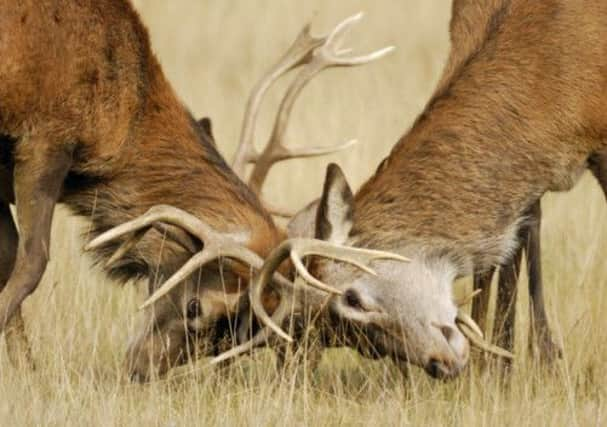Red deer antlers point to climate change


Researchers studying the impact of climate change on the species on a remote Hebridean island say the deer are also rutting earlier.
The rutting season on Rum, when the island’s stags compete for a mate and, potentially, for their survival, has been followed by millions of viewers on the BBC’s Autumnwatch series.
Advertisement
Hide AdAdvertisement
Hide AdThe earlier breeding is thought to be the result of improved grazing, due to the longer growing season in spring and summer.
Scientists have been studying the red deer population on the Isle of Rum since 1953.
It is one of the longest running research projects of its kind anywhere in the world.
The climate change research is based on data gathered since 1980.
Scientists monitor deer living in the north of Rum in the Inner Hebrides every day of the year and are able to identify the individual animals by sight.
Deer researcher Ali Morris said: “In spring, the main things we’re watching for are changes in the hinds’ udders, as we’re trying to work out if they’re pregnant or lactating.
“We spend our time peering behind individual hinds’ back legs.”
The work may be unusual but it shows there has been a significant change in the timing of the red deer breeding cycle.
Advertisement
Hide AdAdvertisement
Hide AdProf Josephine Pemberton, of Edinburgh University, one of the scientists leading the research, said: “We’ve found that several timing events have got a lot earlier, for example the calving dates have come forward by about 12 days.
“The rutting dates also come forward too, which is consistent with that, but also the antler casting and cleaning dates have come forward.”
Prof Pemberton said those stags’ antlers are also showing signs of change and, again, she believes there could be a link with climate change and the availability of improved grazing for the animals.
She said: “There may be an effect on actual antler size, because they’re very sensitive to the grazing conditions in the year when they’re being grown.
“We do, indeed, find that after you adjust for the age of the stag, the antlers are getting bigger.”
The team of scientists from Edinburgh and Cambridge universities acknowledge that building up a more detailed picture of the impact of climate change on red deer will require more work.
But the results of their studies are already providing important information for the conservation organisations and sporting estates responsible for managing Scotland’s red deer population.